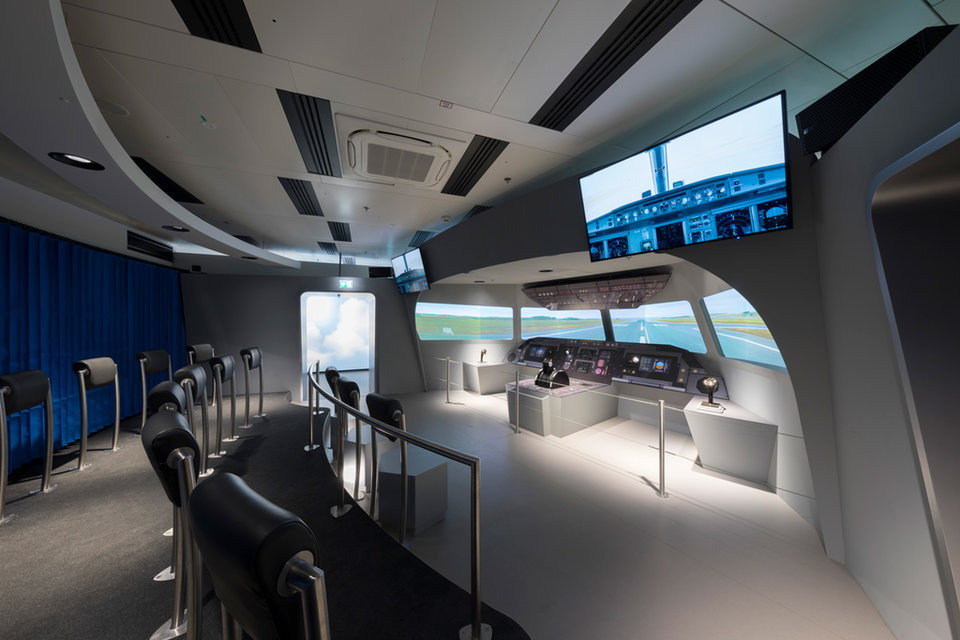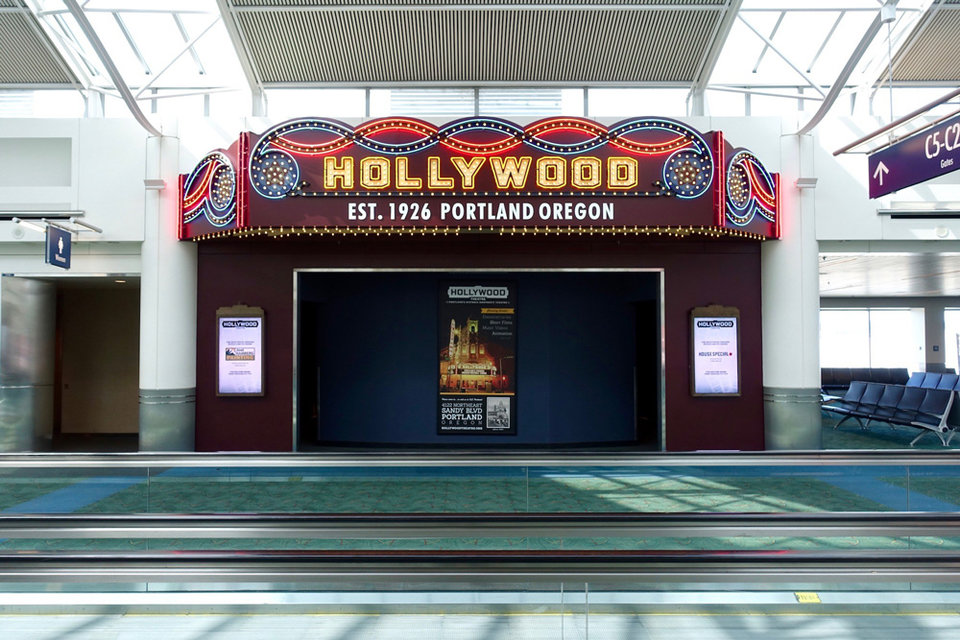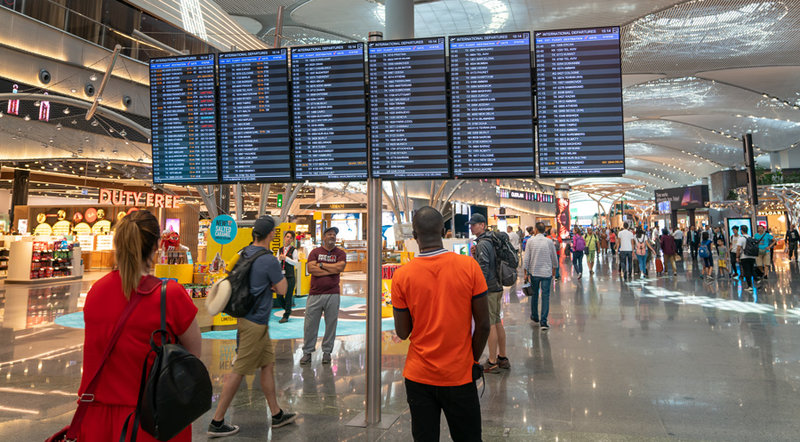Technology
Using AV tech to enhance airports
Several airports are using audiovisual (AV) technologies to convert a humdrum wait in departures into an exciting and potentially profitable diversion. From virtual reality simulators at Vienna to elaborate LED displays at Charlotte Douglas, AVIXA chief marketing officer Dan Goldstein highlights how AV technologies are giving passengers a travel experience to remember.
Scour headlines and you’ll perceive a trend that airports are dedicated to creating spaces and experiences that engage passengers. From The Wall Street Journal: ‘New airport terminals where killing time has its perks’. From Bloomberg: ‘Airports open up to terminal tourists who just want to hang out’. Today, there are luxury brands that report selling more goods in airports than at stores — and that fact has design professionals and technologists thinking.
At airports around the world, clever uses of audiovisual technology are reshaping the passenger experience. Most people interact with these installations for just moments, as they scurry to catch a plane, make a connection, grab a bite, or gather their luggage and head out. Still, as many airports invest millions in infrastructure, a crucial element is the video and audio technology that makes travel more enjoyable, brands a city, markets a terminal’s vendors, engages the public, communicates information, and more.
As more people travel, transportation hubs — including airports — are reinventing themselves. And according to research by AVIXA, the Audiovisual and Integrated Experience Association, they’re boosting their investment in audiovisual (AV) solutions, whether that’s digital signage, video walls, or interactive displays. According to AVIXA’s Industry Outlook and Trends Analysis (IOTA) report, the transportation sector spent about $11.5bn worldwide on AV products and services in 2019. And investment in AV by transportation enterprises is expected to outstrip the overall market, growing almost 8% a year through 2023.
What does that kind of investment look like in the real world of air travel? Such AV experiences take many shapes.
Dan Goldstein is the chief marketing officer for the Audiovisual and Integrated Experience Association (AVIXA), which represents the $231bn global commercial AV industry and produces InfoComm trade shows around the world. Image: AVIXA

Image: Sorbis / Shutterstock.com
Virtual reality simulations in Vienna
At Vienna International Airport, for example, officials commissioned an audiovisual experience designed to connect with visitors in new, technologically savvy ways while enhancing their appreciation of air travel.
Part of Vienna Airport’s Visitor World, accessible in Terminal 3, are several audiovisual installations that simulate everything from a bag’s journey through the system, to a virtual view from air traffic control, to the experience in an aeroplane cockpit. For the cockpit area, the airport and its partners installed laser projectors and a curved screen to create the desired effect in bright, realistic colour. Custom content is fed to the projectors from a central server and blended together in a single, unified view.
This year, Vienna Airport is introducing a virtual reality simulator to its Visitor World, reportedly the first of its kind in Austria. The VR experience, dubbed Birdly, takes participants on virtual flights through Jurassic landscapes or New York’s Manhattan. The airport sells tickets to Visitor World, making the installation not only engaging, but also a revenue generator. Vienna Airport said that in the first year of its operation, Visitor World attracted more than 160,000 — with and without tickets (though a security is always required for a Visitor World tour).

Vienna International has introduced a virtual reality simulator to its Visitor World offering. Image: ‘Christie’
Immersed in digital art in Charlotte
Other airports are experimenting with new uses of AV to create a sense of place as travellers pass through. As the gateway to much of the southeast US, Charlotte Douglas International Airport services millions of travellers every year. Recently, the city of Charlotte launched a $2.5bn renovation project called Destination CLT, intended to promote the evolving cultural and technological influence of the Charlotte metroplex.
When the Charlotte Arts and Science Council sought a digital art feature for Concourse A that fused technology, art, and design, the result was Interconnected, by renowned digital sculptor Refik Anadol. The team originally considered modern projection technology, but after realising projectors couldn’t compete with the concourse’s high ambient light levels, it decided on a series of LED displays — the type you might ordinarily see outdoors on digital billboards or at New York’s Time Square.
The primary LED display is 10ft tall and extends 140ft along a hallway framed by large windows. Passengers glide past on a moving walkway and data from airport systems, weather feeds, and other local sources combine to create living, swirling, immersive digital artwork along the length of the display. The massive digital sculpture is visible through the windows from the curb outside, allowing road traffic to take in the spectacle as well.
“We really wanted to focus on passenger experience,” said Katie McCoy, CLT’s Business Intelligence Manager. “Happier passengers spend more money.”

The Charlotte Arts and Science Council supported the installation of LED displays at the airport. Image: Nanolumens
A terminal theatre in Portland
Certainly, audiovisual experiences can be one of many ways to foster happier passengers. San Francisco International Airport has a yoga studio; Hong Kong International Airport a golf venue; and Austin-Bergstrom International Airport has live music, befitting its reputation as a music town.
Portland International Airport created a decidedly AV-centric amenity when it opened a new microcinema — a free, 17-seat theatre that shows short films from Pacific Northwest filmmakers. Developed by the city’s non-profit Hollywood Theatre in collaboration with the PDX Art programme at the Port of Portland, the Hollywood Theatre at Portland International Airport is open to travellers around the clock.
The airport microcinema is located after the security checkpoint in the airport's C Concourse and features a 130-inch CinemaScope screen, illuminated by a laser phosphor projector. Programmes, including documentaries, music videos, animations, and short fiction, play on a loop for visitors 24/7, with a new package of films opening every three months.
To make the microcinema project possible, AV manufacturers donated projection equipment and audiovisual technology, including state-of-the-art 4K LCD displays and an automated content server for playing back films. The 4K LCD displays are mounted at the entrance of the theatre in the style of movie poster portraits, providing a preview of the films showing inside while also advertising features currently screening at the Hollywood Theatre’s larger northeast Portland location.

AV manufacturers donated projection equipment and audiovisual technology to make the airport cinema a reality.
Modern terminals, modern experiences
As airport authorities renovate and upgrade terminal facilities with modern restaurants and stores and open up transit areas with floor-to-ceiling windows and even skylights, there is a growing market for bright, big displays that show more than just arrival and departure times and baggage claim locations.
In fact, when it comes to implementing advanced AV solutions in airports, the sky’s the limit. Whether it’s eye-catching electronic artwork along concourses, microcinemas to while away the hours between flights, or interactive exhibits that take you behind the scenes, audiovisual technology is being put to use every day to entertain and educate travellers with the goal of making air travel less stressful and more enjoyable.

Istanbul Airport is an example of an aviation hub with a major retail focus. Image: canyalcin / Shutterstock.com